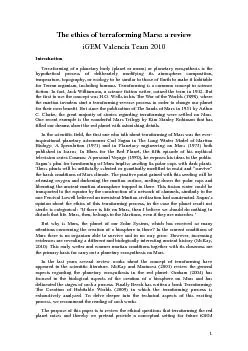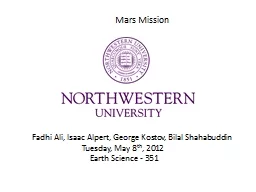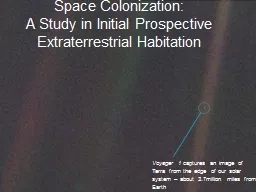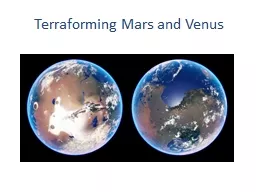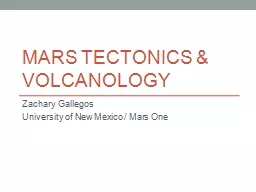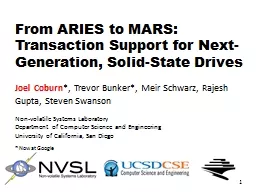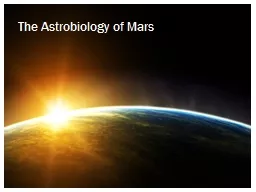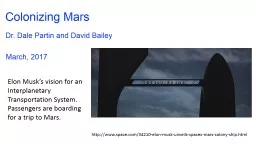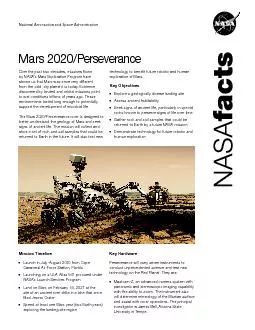PDF-The ethics of terraforming Mars: a review
Author : celsa-spraggs | Published Date : 2015-11-13
1 iGEM Valencia Team 2010 Introduction Terraforming of a planetary body planet or moon or planetary ecosynthesis is the hypothetical process of delibe rately modifying
Presentation Embed Code
Download Presentation
Download Presentation The PPT/PDF document "The ethics of terraforming Mars: a revie..." is the property of its rightful owner. Permission is granted to download and print the materials on this website for personal, non-commercial use only, and to display it on your personal computer provided you do not modify the materials and that you retain all copyright notices contained in the materials. By downloading content from our website, you accept the terms of this agreement.
The ethics of terraforming Mars: a review: Transcript
Download Rules Of Document
"The ethics of terraforming Mars: a review"The content belongs to its owner. You may download and print it for personal use, without modification, and keep all copyright notices. By downloading, you agree to these terms.
Related Documents

